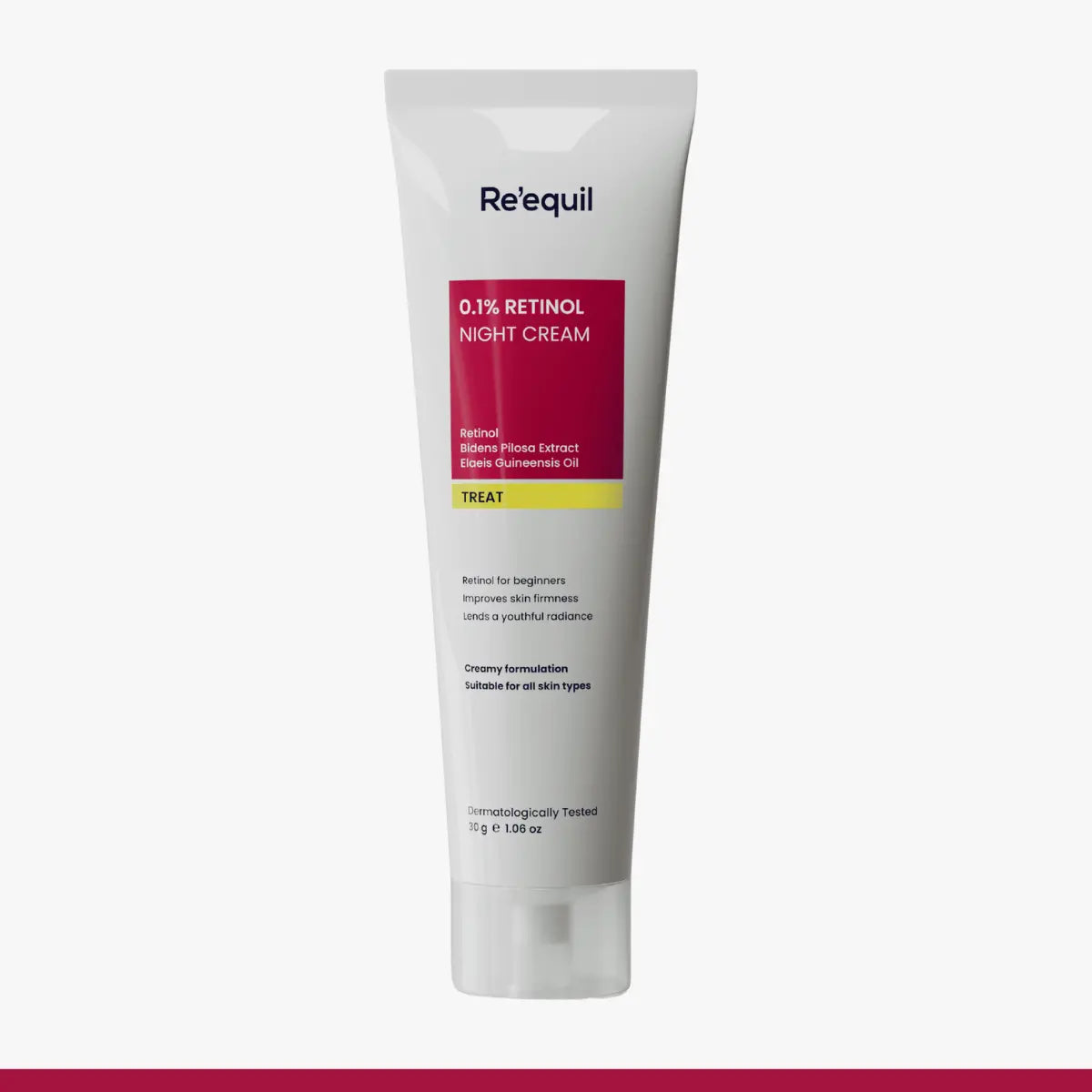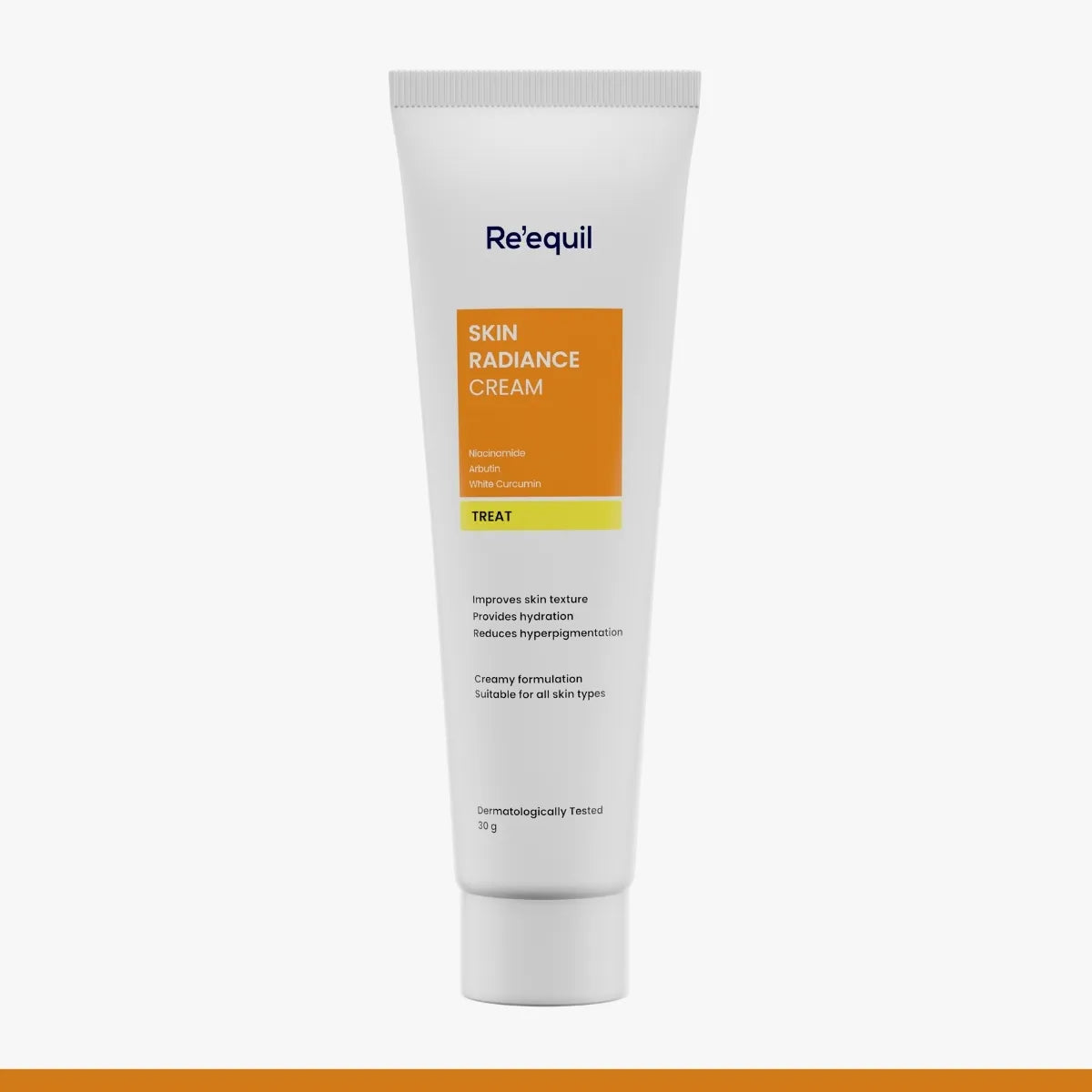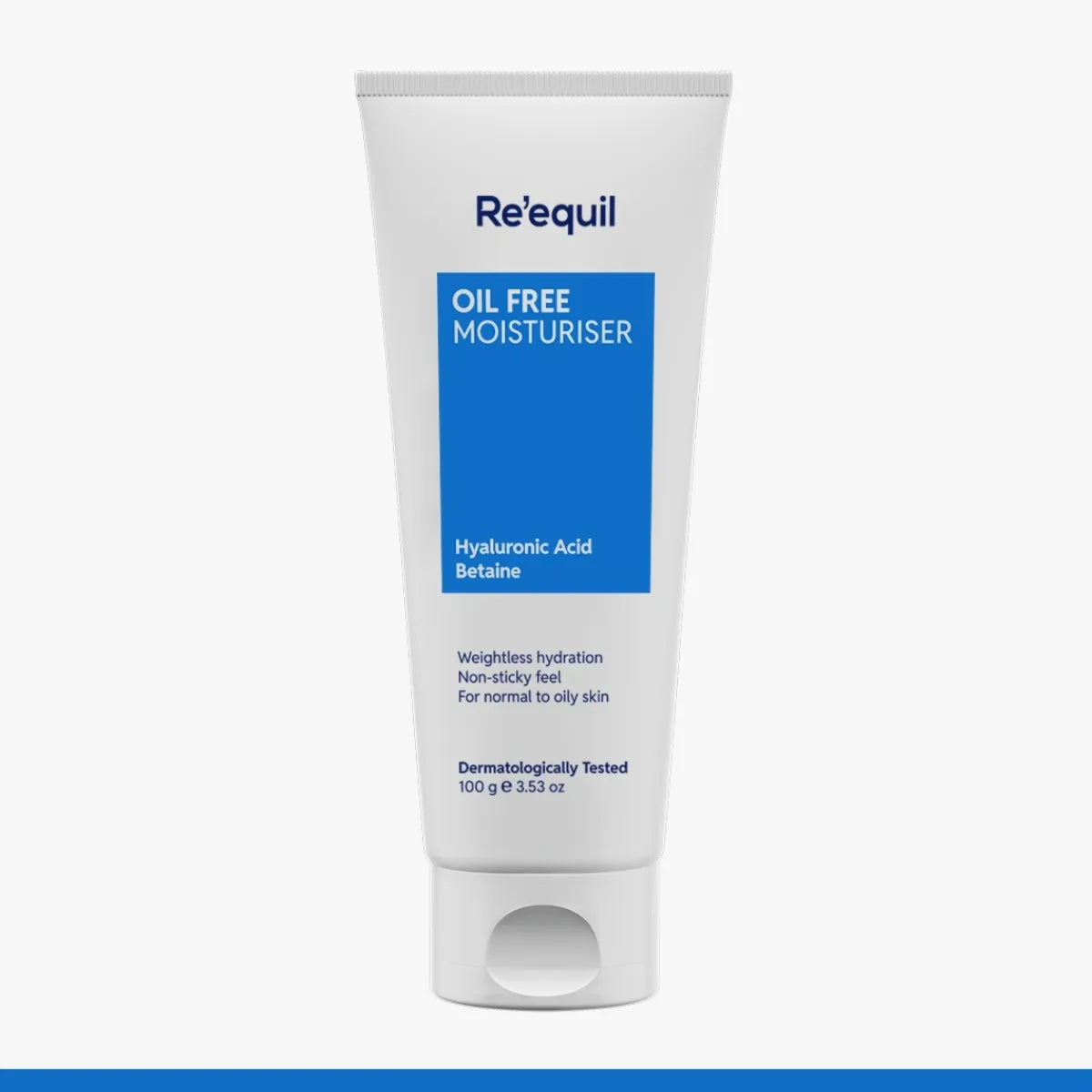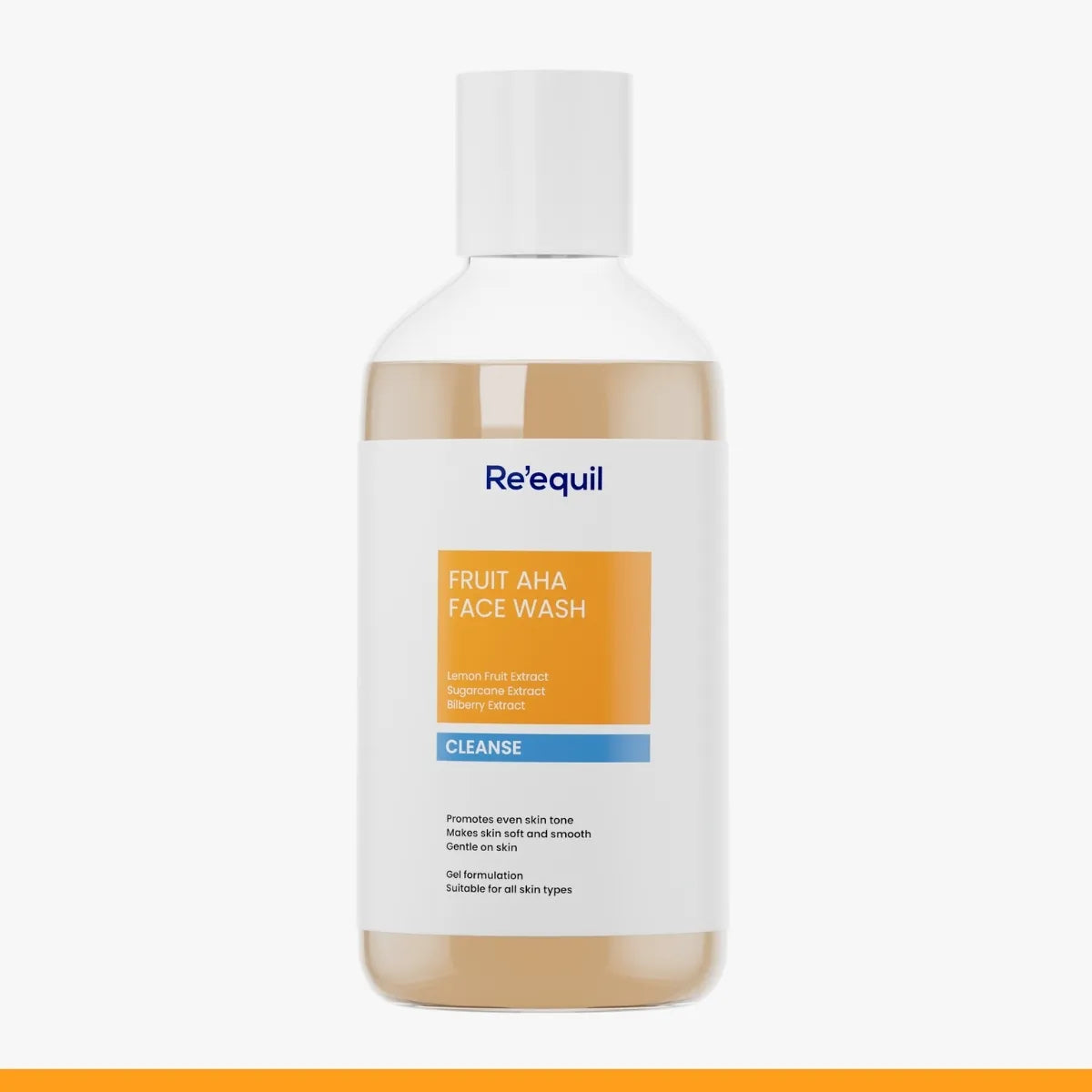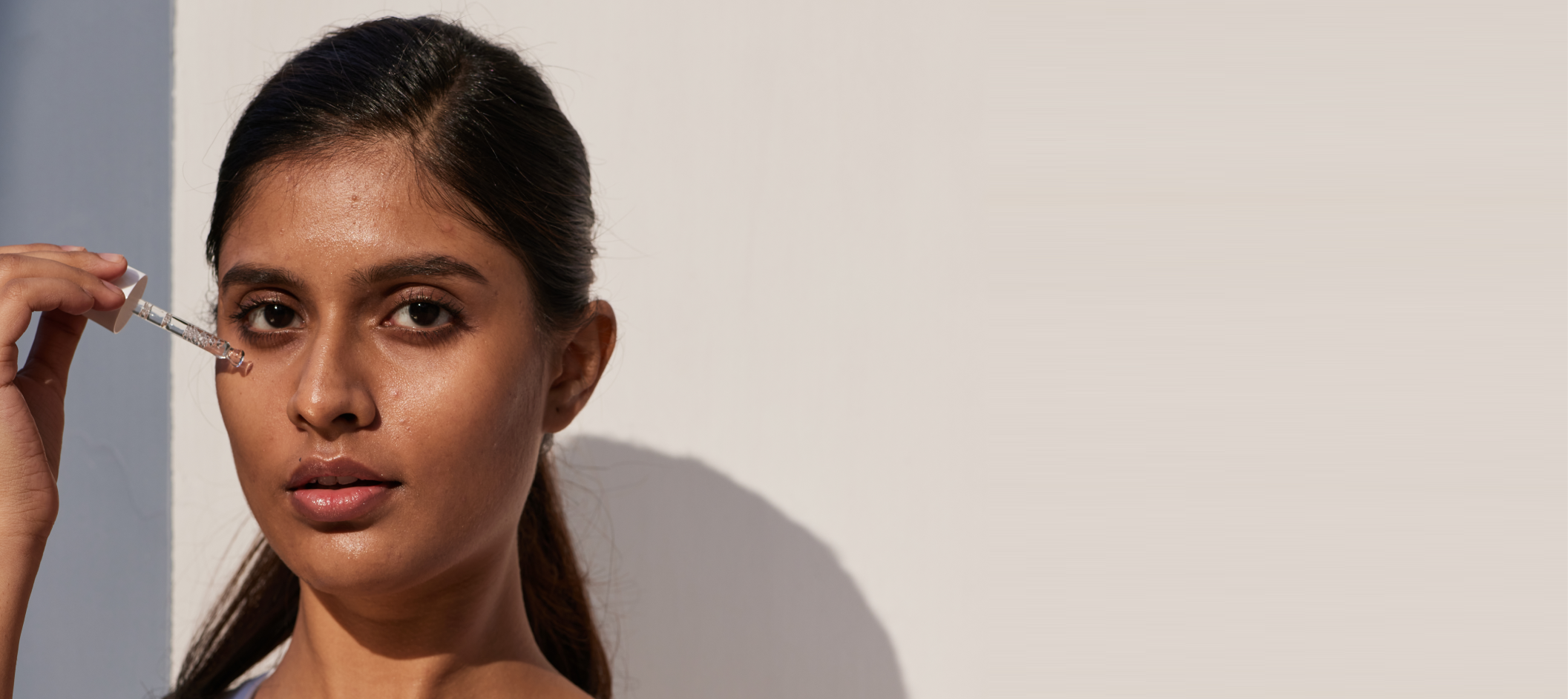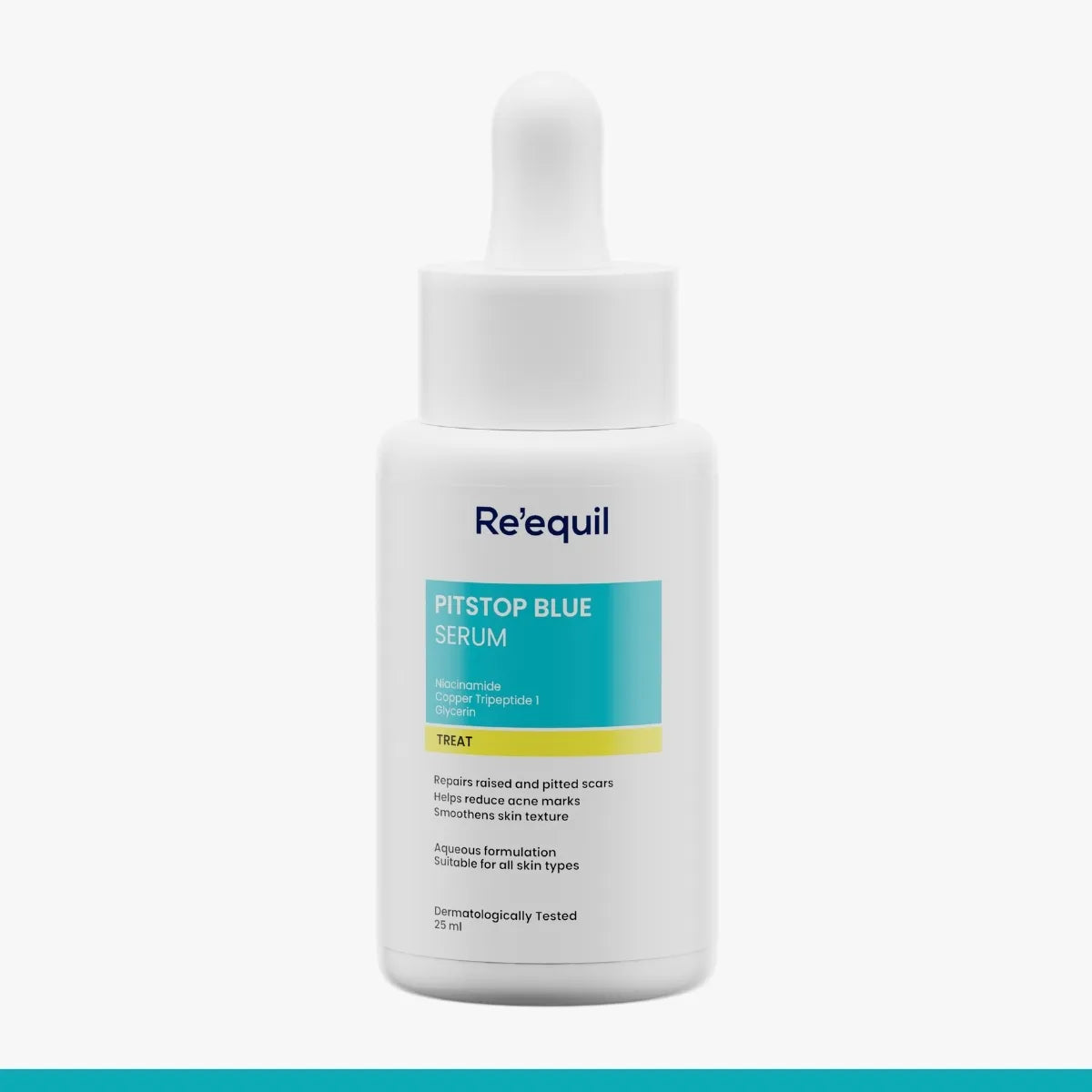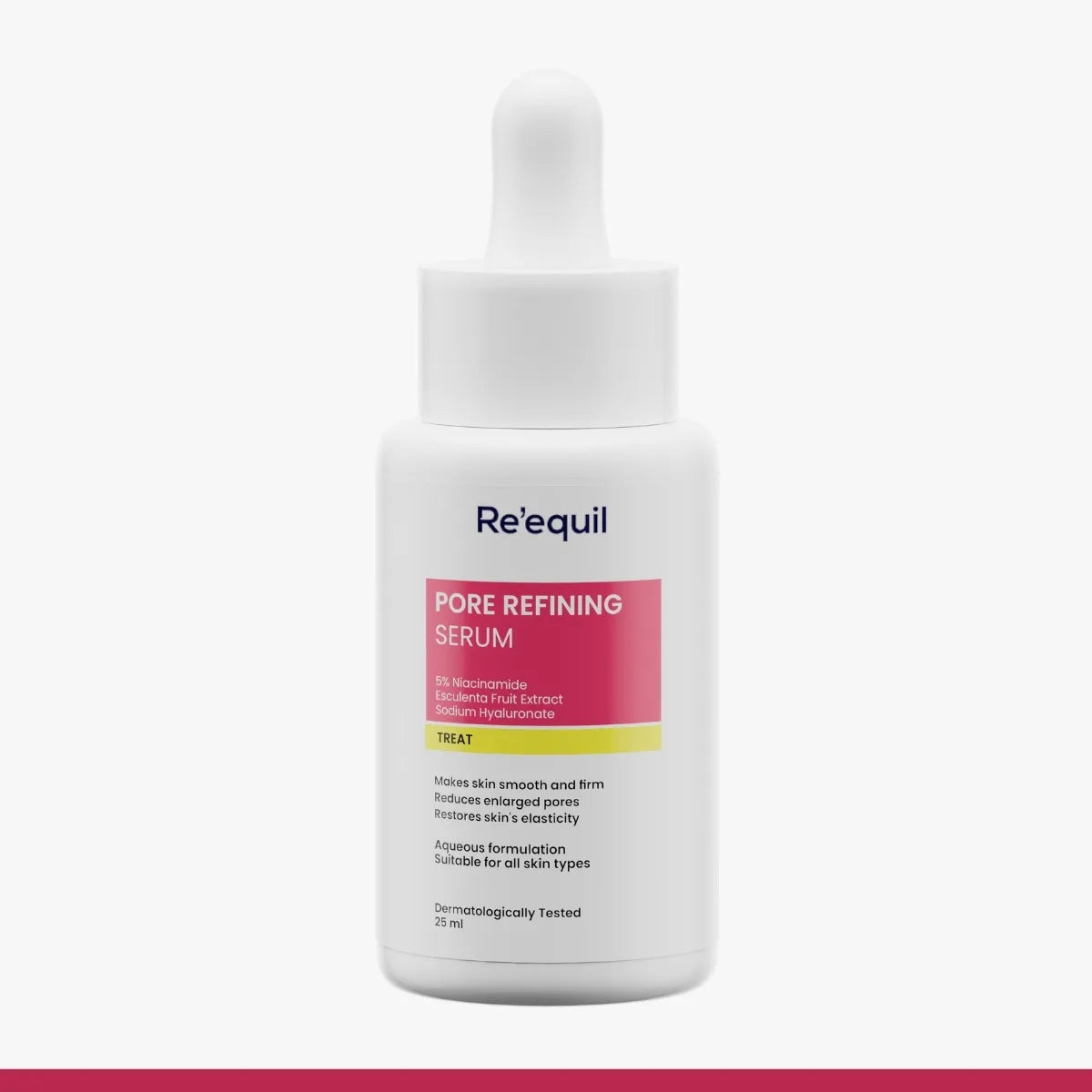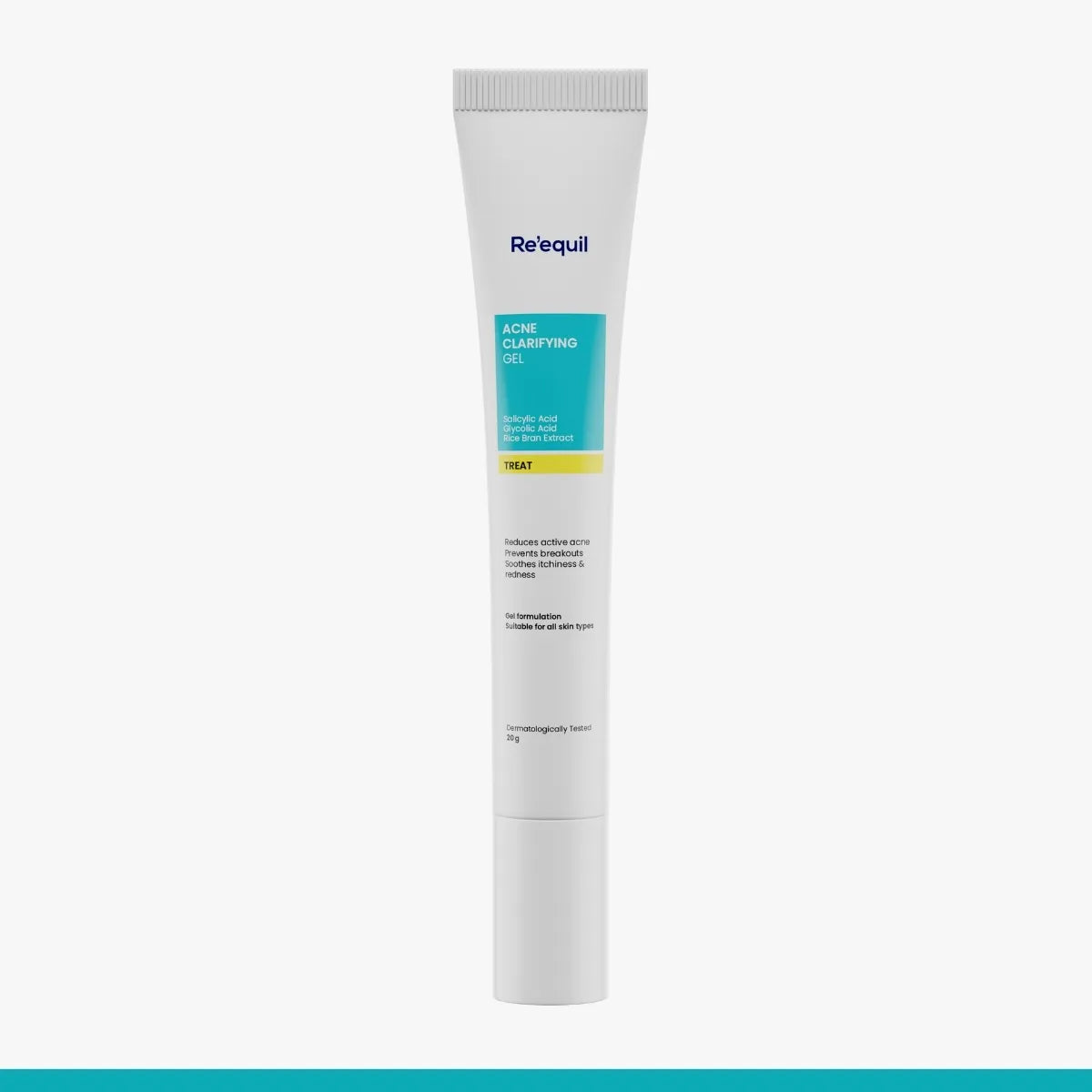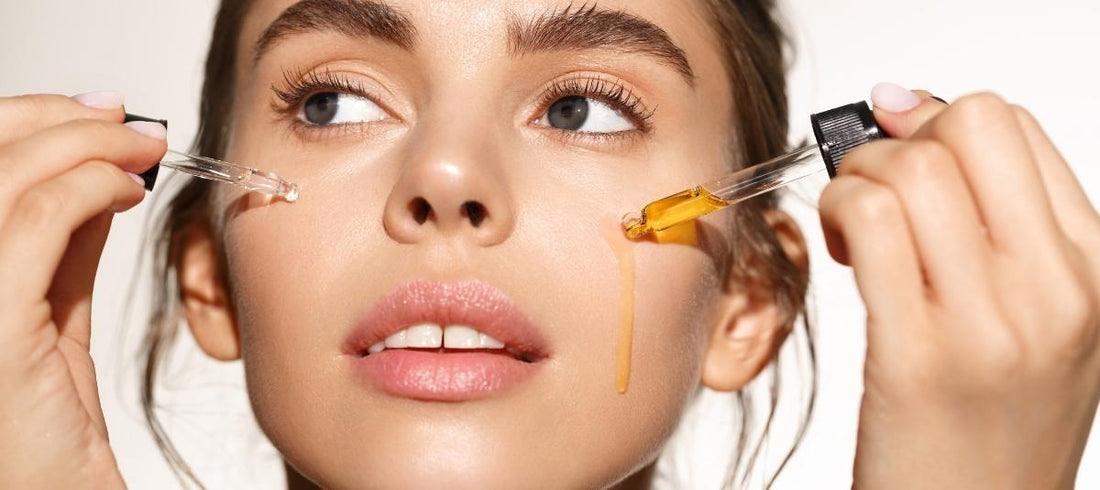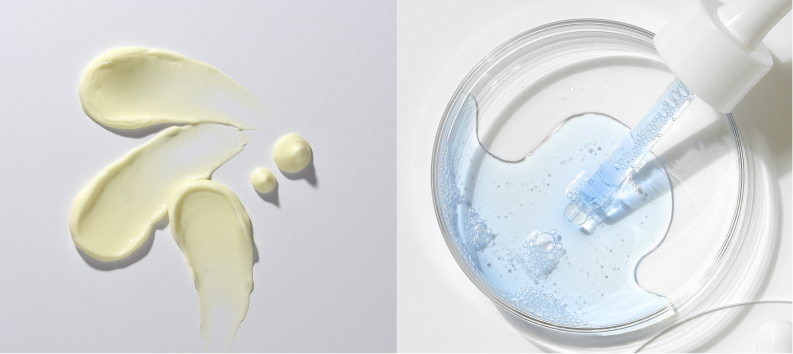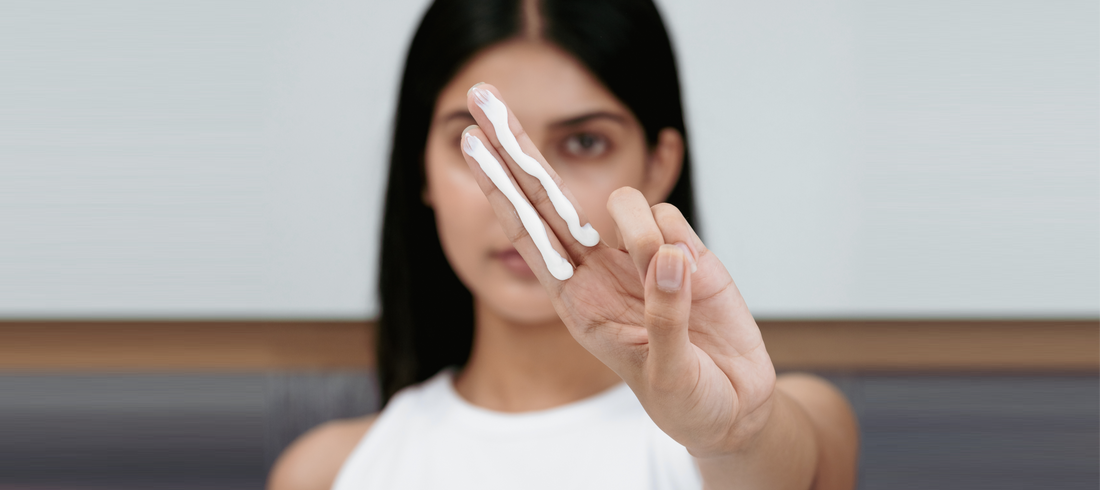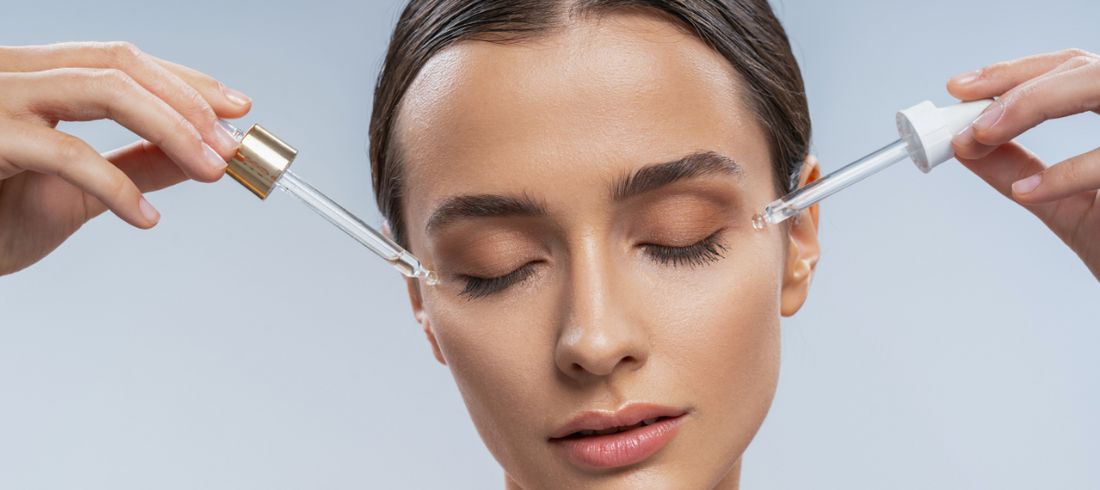Search "serums for oily skin" on Amazon; you will find that Niacinamide is included in about half of the serums that come up.
So can Niacinamide thus address clogged pores, acne, and excess shine on the face—some major concerns of an individual with oily skin?
And are there any clinical studies that prove so?
Let’s find out in this post.
What is Niacinamide?
Niacinamide, also named Nicotinamide, is a water-soluble vitamin B3 that is naturally found in food, processed food products, and some dietary supplements.
Niacinamide has also been widely explored in cosmeceutical products—available in various topical treatments (creams, gels and serums).
It is mainly known for its ability to reduce the progression of skin ageing and hyperpigmentation.
Niacinamide has skin-lightening properties—and the clinical trial proves so
18 Japanese women with mild to moderate brown hyperpigmentation were enrolled in a clinical trial.
Each individual was given two moisturisers—one with 5% Niacinamide and the other without niacinamide.
They were instructed to apply one moisturiser on one side of the face and vice versa.
After 4 to 8 weeks of application, the side with the Niacinamide moisturiser showed a considerable improvement in hyperpigmentation as compared to the other.
Moreover, Niacinamide reduces melanin production, improving the skin lesions of individuals with melasma, as per a 2021 study.
Niacinamide is the only ingredient that closely upholds “Kligman standards”
Dr. Albert Kligman says the best way to determine a skincare ingredient’s benefit is by asking three questions -
- Can this ingredient penetrate the stratum corneum and deliver sufficient concentrations to the deeper layer of the skin?
- Does the ingredient have a biochemical mechanism of action in the target cell?
- Are there any clinical studies that prove the efficacy of this ingredient?
According to a study, Niacinamide checks all these boxes.
The benefits of Niacinamide also include
- Improves skin barrier function
Ceramides, a fat or lipid found in skin cells, are the first line of defence for the skin, playing an important role in skin barrier function.
Decreased ceramides can cause dry and scaly skin. Niacinamide has the ability to increase the synthesis of ceramides, protecting skin against moisture loss and other environmental damages.
- Reduces facial redness
Skin redness/blotchiness can be improved if the skin’s barrier function is strong. However, the claim requires more evidence.
- Reduces fine lines and wrinkles
A 2005 clinical trial concluded that Niacinamide is quite effective in reducing the appearance of fine lines and wrinkles.
Can Niacinamide be good for oily skin?
Yes, Niacinamide is a great choice for oily skin treatments—highly effective in regulating sebum production.
Excess sebum is the primary cause of clogged pores, which leads to breakouts—a common concern among individuals with oily skin.
Are there any clinical studies that state Niacinamide is a suitable topical treatment for oily skin?
Yes, there is a 2006 study that proves the efficacy of Niacinamide as an effective topical treatment for individuals with oily skin.
The primary objective of the study was to check the 2% Niacinamide effect on sebum production.
100 individuals were enrolled, 50 were given a 2% Niacinamide moisturiser and the remaining were given a placebo moisturiser—instructed to use it for 4 weeks.
50 individuals who used the 2% niacinamide moisturiser reported a significant decrease in their sebum excretion rates.
However, more studies are needed to determine whether Niacinamide can effectively regulate sebum production.
Can Niacinamide be used for oily, acne-prone skin?
Niacinamide reduces the severity of acne.
Niacinamide contains anti-inflammatory properties, which help ease facial redness, acne, and skin inflammation.
A study concludes that 4% Niacinamide can safely alleviate mild to moderate acne and show improvements in the pustules.
The study was conducted on 41 individuals aged between 18 to 25. Very few individuals reported itching and mild burning.
Topical Niacinamide can boost AMPs in humans, providing the skin with long-lasting protection against bacteria
Antimicrobial peptides (AMPs) are protein molecules found in our body that have all round antimicrobial properties—protecting skin against bacteria (bacteria can alleviate acne by causing inflammation and infection).
Niacinamide can enhance the AMPs in our skin and improve our skin’s antimicrobial response.
What are the side effects of Niacinamide for oily skin?
Niacinamide is generally considered safe for all skin types. On the first usage, it might cause mild burning or itching—other than these—Niacinamide does not have any adverse effects.
A 2011 clinical study conducted to test the efficacy of Niacinamide in the treatment of melasma states that Niacinamide only causes a little burning or pruritus.
You can avoid the Niacinamide adverse effects by doing the following -
- Do a patch test first.
- Start with lower concentrations of Niacinamide.
- If you are using a Niacinamide serum, make sure to follow it up with a moisturiser, as per your skin type.
References
- Mathapathi, M. S., Mallemalla, P., Vora, S., Iyer, V., Tiwari, J. K., Chakrabortty, A., & Majumdar, A. (2017). Niacinamide leave-on formulation provides long-lasting protection against bacteria in vivo. Experimental Dermatology, 26(9), 827-829. https://doi.org/10.1111/exd.13285
- Draelos ZD, Matsubara A, Smiles K. The effect of 2% niacinamide on facial sebum production. J Cosmet Laser Ther. 2006 Jun;8(2):96-101. doi: 10.1080/14764170600717704. PMID: 16766489.
- Bissett DL, Oblong JE, Berge CA. Niacinamide: A B vitamin that improves aging facial skin appearance. Dermatol Surg. 2005 Jul;31(7 Pt 2):860-5; discussion 865. doi: 10.1111/j.1524-4725.2005.31732. PMID: 16029679.
- Levin J, Momin SB. How much do we really know about our favorite cosmeceutical ingredients? J Clin Aesthet Dermatol. 2010 Feb;3(2):22-41. PMID: 20725560; PMCID: PMC2921764.
- Boo, Y. C. (2021). Mechanistic Basis and Clinical Evidence for the Applications of Nicotinamide (Niacinamide) to Control Skin Aging and Pigmentation. Antioxidants, 10(8). https://doi.org/10.3390/antiox10081315
